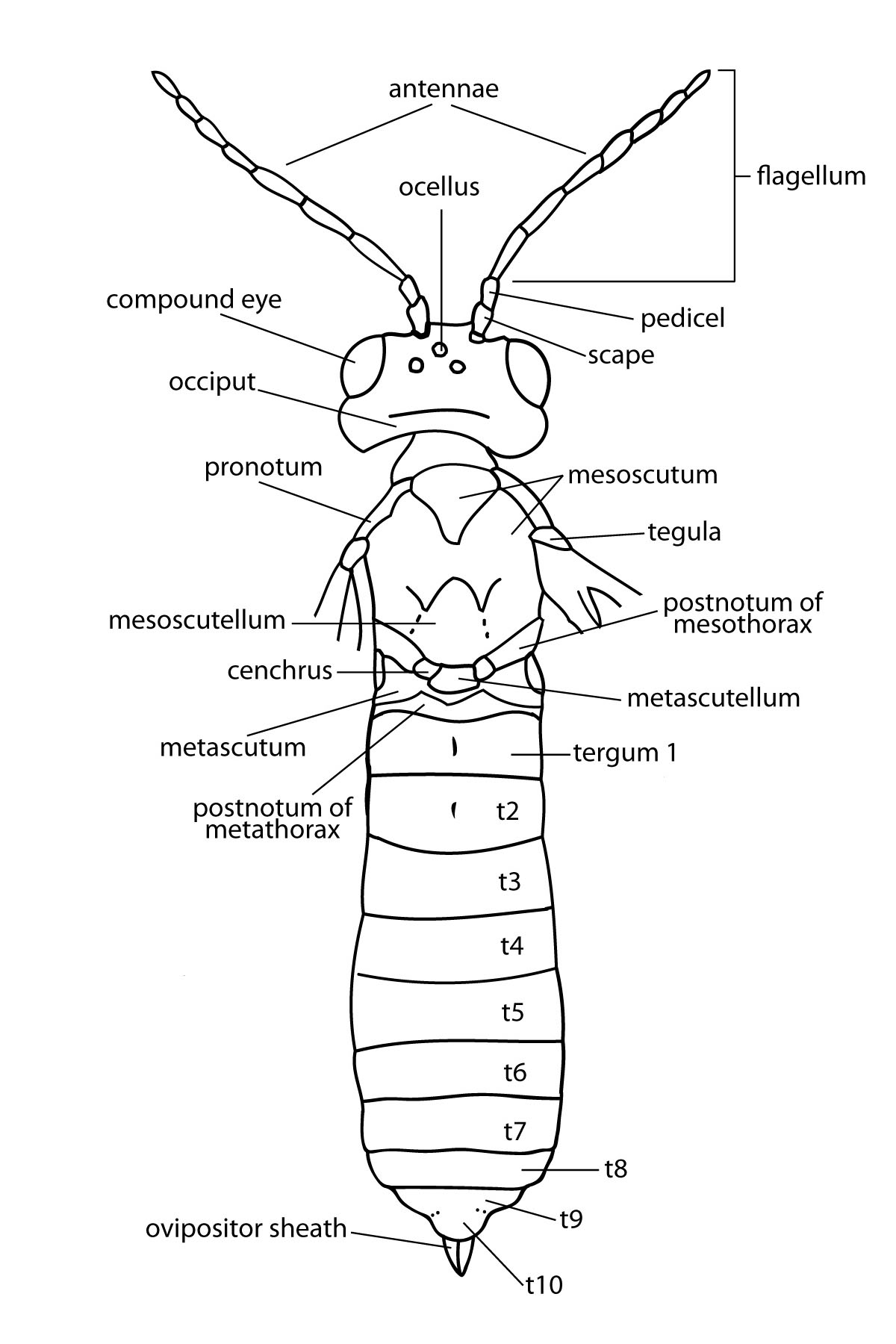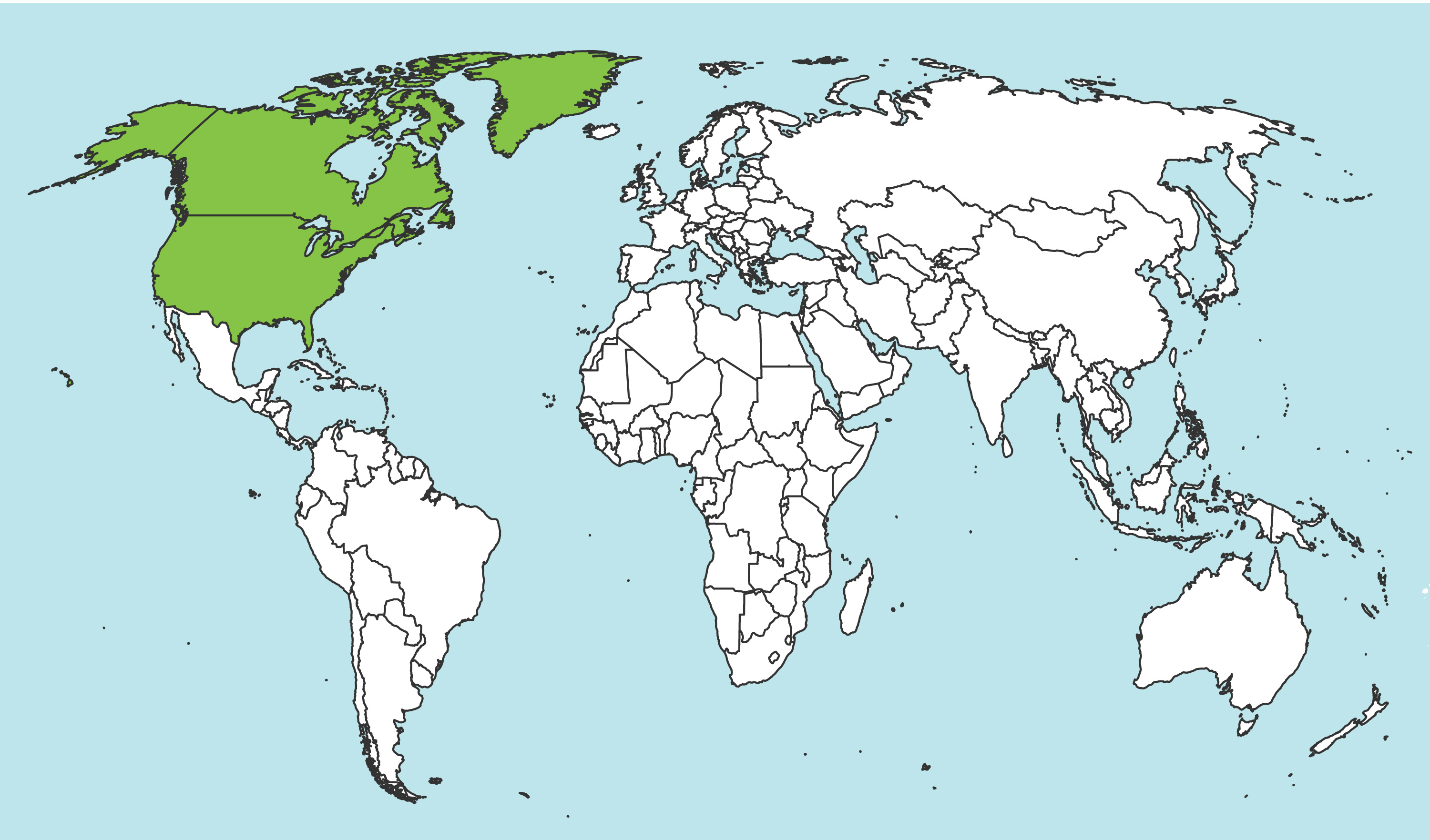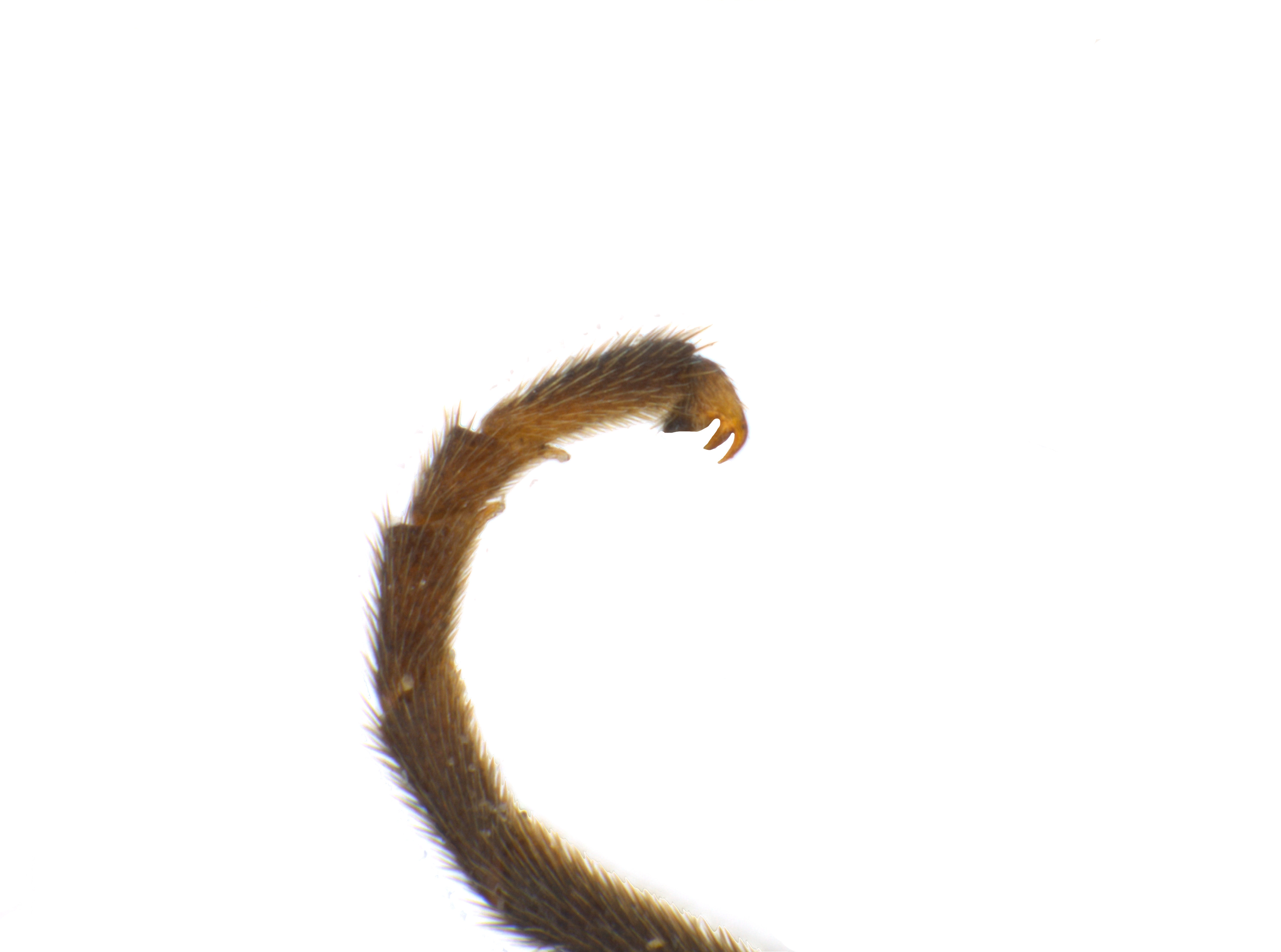Family: Tenthredinidae
Family common name: common sawflies
Subfamily: Heterarthrinae
Tribe: Fenusini
Genus: Scolioneura Konow, 1890
Subgenera: none
The Tenthredinidae are the most species-rich family and are found throughout the world, in all continents but Antarctica. They are known as the “common sawflies.” They can generally be recognized by a cylindrical body and long, segmented antennaeantenna:
the sensory organ emerging from the front of the head, usually between the compound eyes and above the clypeus; includes the flagellum, scape and pedicel
 . Otherwise, they come in a variety of colors, sizes, and forms (Goulet 1992Goulet 1992:
. Otherwise, they come in a variety of colors, sizes, and forms (Goulet 1992Goulet 1992:
Goulet H. 1992. The genera and subgenera of the sawflies of Canada and Alaska: Hymenoptera. Symphyta. The insects and arachnids of Canada. Part 20. Agriculture Canada Publication.).
Sawflies in the Heterarthrinae subfamily are generally small and dark-colored. Many species of this family are economic pests of trees and shrubs and can be characterized by their skeletonizing or leaf-mining larval feeding behaviors. Heterarthrinae adults can be distinguished from those of other subfamilies by wing venationvenation:
the network of veins on a wing
(Smith 1971aSmith 1971a:
Smith DR. 1971a. Nearctic Sawflies. III. Heterarthrinae: Adults and larvae (Hymenoptera: Tenthredinidae). Technical Bulletin, U.S. Department of Agriculture 1420: 1-84.).
Scolioneura are small, mostly black sawflies with a distinctive head structure, including an occipitalocciput:
the posterior surface of the head
 ridge and large median ocellarocellar:
ridge and large median ocellarocellar:
of or pertaining to the ocellus or ocelli
area (Goulet 2017Goulet 2017:
Goulet H. 2017. A second species of Scolioneura (Tenthredinidae: Heterarthrinae: Fenusini) in western North America. Proceedings of the Entomological Society of Washington 119 (Special Issue): 778-788. https://doi.org/10.4289/0013-8797.119.SpecialIssue.778). The Fenusini tribe are all leaf miners (Goulet 1992Goulet 1992:
Goulet H. 1992. The genera and subgenera of the sawflies of Canada and Alaska: Hymenoptera. Symphyta. The insects and arachnids of Canada. Part 20. Agriculture Canada Publication.).
There are seven described extantextant:
in existence; opposite of extinct
species worldwide. Three species occur in North America (Taeger et al. 2018Taeger et al. 2018:
Taeger A, Liston AD, Prous M, Groll EK, Gehroldt T, and Blank SM. 2018. ECatSymmdash;Electronic World Catalog of Symphyta (Insecta, Hymenoptera). Program version 5.0 (19 Dec 2018), data version 40 (23 Sep 2018). Senckenberg Deutsches Entomologisches Institut (SDEI), Muuml;ncheberg. https://sdei.de/ecatsym/ Accessed: 28 Jan 2020.).
A key to NearcticNearctic:
describing the region of the Northern Hemisphere that includes North America south through northern Mexico
 females is included in Goulet 2017Goulet 2017:
females is included in Goulet 2017Goulet 2017:
Goulet H. 2017. A second species of Scolioneura (Tenthredinidae: Heterarthrinae: Fenusini) in western North America. Proceedings of the Entomological Society of Washington 119 (Special Issue): 778-788. https://doi.org/10.4289/0013-8797.119.SpecialIssue.778.
Subfamily characters
 M slightly constricted at apexapex:
M slightly constricted at apexapex: vein 2r present (Goulet 1992Goulet 1992:
vein 2r present (Goulet 1992Goulet 1992:Genus characters
 wider than long (Goulet 1992Goulet 1992:
wider than long (Goulet 1992Goulet 1992: veins 2A and 3A incomplete and curved upwards (Smith 1976bSmith 1976b:
veins 2A and 3A incomplete and curved upwards (Smith 1976bSmith 1976b: not haired on median lobe (Goulet 1992Goulet 1992:
not haired on median lobe (Goulet 1992Goulet 1992: with distinct basalbasal:
with distinct basalbasal: bifidbifid:
bifidbifid: ; teeth about equal in length (Smith 1976bSmith 1976b:
; teeth about equal in length (Smith 1976bSmith 1976b:Scolioneura can be confused with other genera in the subfamily. It can be distinguished by markedly longer flagellomeres and the presence of the occipitalocciput:
the posterior surface of the head
 ridge (Goulet 1992Goulet 1992:
ridge (Goulet 1992Goulet 1992:
Goulet H. 1992. The genera and subgenera of the sawflies of Canada and Alaska: Hymenoptera. Symphyta. The insects and arachnids of Canada. Part 20. Agriculture Canada Publication.).
none
Scolioneura vicinia feeds on Betula (birch) (Goulet 1992Goulet 1992:
Goulet H. 1992. The genera and subgenera of the sawflies of Canada and Alaska: Hymenoptera. Symphyta. The insects and arachnids of Canada. Part 20. Agriculture Canada Publication.), and S. vaccinii feeds on Vaccinium parviflorum (red huckleberry) and Vaccinium membranaceum (thinleaf huckleberry). Rhododendron menziesii is a possible host of S. smithi (Goulet 2017Goulet 2017:
Goulet H. 2017. A second species of Scolioneura (Tenthredinidae: Heterarthrinae: Fenusini) in western North America. Proceedings of the Entomological Society of Washington 119 (Special Issue): 778-788. https://doi.org/10.4289/0013-8797.119.SpecialIssue.778).
The specific biology of Scolioneura is unknown. LarvaeLarva:
the immature stage of holometabolous insects
 are leaf miners that create blotch mines (Smith et al. 2015Smith et al. 2015:
are leaf miners that create blotch mines (Smith et al. 2015Smith et al. 2015:
Smith DR, Eiseman CS, Charney ND, and Record S. 2015. A new Nearctic Scolioneura (Hymenoptera, Tenthredinidae) mining leaves of Vaccinium (Ericaceae). Journal of Hymenoptera Research 43: 1-8. https://doi.org/10.3897/ JHR.43.4546).
World: This genus is known from North America, Central and Eastern Europe, Iran, and China (Taeger et al. 2018Taeger et al. 2018:
Taeger A, Liston AD, Prous M, Groll EK, Gehroldt T, and Blank SM. 2018. ECatSymmdash;Electronic World Catalog of Symphyta (Insecta, Hymenoptera). Program version 5.0 (19 Dec 2018), data version 40 (23 Sep 2018). Senckenberg Deutsches Entomologisches Institut (SDEI), Muuml;ncheberg. https://sdei.de/ecatsym/ Accessed: 28 Jan 2020.).
North America: Scolioneura occurs in Canada from Ontario west to British Columbia, and in Washington State (Goulet 2017Goulet 2017:
Goulet H. 2017. A second species of Scolioneura (Tenthredinidae: Heterarthrinae: Fenusini) in western North America. Proceedings of the Entomological Society of Washington 119 (Special Issue): 778-788. https://doi.org/10.4289/0013-8797.119.SpecialIssue.778).
Map data from: GBIF.org (29 October 2019) GBIF Occurrence Download Scolioneura
Details about data used for maps can be found here.